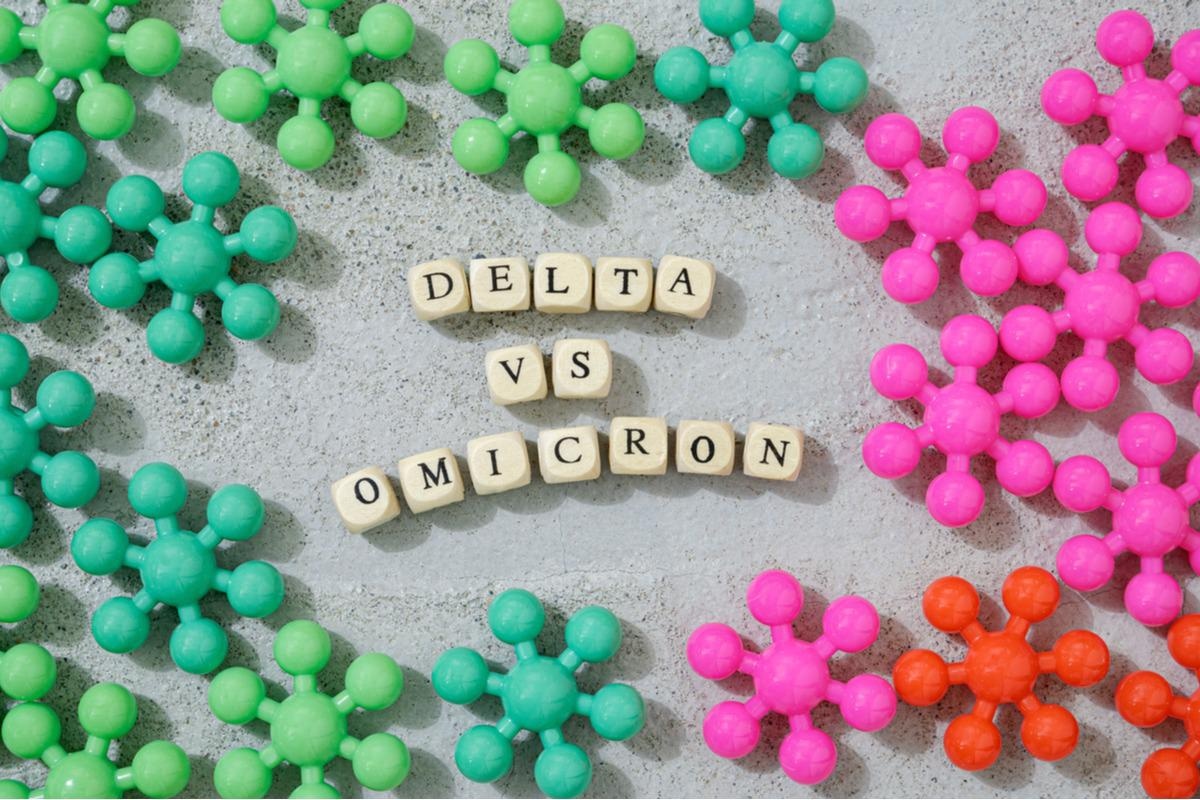Evidence of lower COVID-19 severity in SARS-CoV-2 Omicron infection compared to Delta infection

In a recent study posted to the medRxiv* pre-print server, researchers compared the coronavirus disease 2019 (COVID-19) severity among hospitalized patients infected with the severe acute respiratory syndrome coronavirus 2 (SARS-CoV-2) Delta and Omicron variants in Norway.

The constant emergence of SARS-CoV-2 variants has caused difficulties in mitigating the COVID-19 pandemic. Moreover, the degree of morbidity and mortality inflicted by these variants is variable. An assessment of each variant’s impact on COVID-19 severity would facilitate optimal utilization of health facilities and efficient health infrastructure development to improve the patients’ well-being.
About the study
In the present cohort study, the researchers compared COVID-19 severity among Norwegian patients infected by the Delta and Omicron variants and hospitalized between December 6, 2021, and February 6, 2022.
Data on the causative variant of COVID-19-associated hospitalization, the extent of disease, and the vaccination status (unvaccinated or vaccinated with single, double, or triple doses) were obtained from Beredt C19 of the National emergency preparedness registry of Norway.
The outcomes assessed comprised length of hospital stay (LoS), in-hospital deaths, and the risk of intensive care unit (ICU) admissions. The LoS was defined as the period between the first admission and last hospital discharge.
Patients with COVID-19 as the principal cause of hospitalization, infected by the Delta or Omicron variants, and possessed national identification numbers were included in the study. The data was extracted on February 15, 2022, to allow a minimum of eight days follow-up period since the date of hospitalization.
The differences in outcome were estimated by calculating adjusted hazard ratios (aHR) by the Cox proportional hazards model. The explanatory or independent variables were gender, viral variant, age, underlying risk factors, native country, vaccination status, and the regional healthcare authorities.
Additionally, a subgroup analysis was performed considering the vaccination status and age groups with greater than 50 patients infected by Omicron and Delta variants. The team also determined the representativeness of the hospitalized patients with known causative variants among all the COVID-19 patients during the study period.
Results and discussion
A total of 1,747 patients were hospitalized with COVID-19 as the prime cause of hospital admissions, of which 1,710 had national identification numbers and 1,079 patients were hospitalized with a known variant. Of these patients, 409 and 666 patients were infected by the Omicron and Delta variants, respectively. Three patients were excluded since they were infected with variants other than the Delta and Omicron, and one patient was excluded due to the positive test date being within two months of hospitalization.
The patients infected by the Omicron variant had a 48% and 56% reduced risk of ICU admissions and in-hospital deaths, respectively. Additionally, among primarily vaccinated adults aged below 80 years, the LoS was shorter with the Omicron variant although no differences in the in-hospital mortality were observed due among the Delta and Omicron variants.
Likewise, among patients aged above 80 years, infrequent ICU admissions and lower death rates were observed. The average number of days from positive test to hospitalization was also lower (zero days) for the Omicron variant compared to the Delta variant (four days) in this multivariate analysis.
Among Omicron-induced COVID-19 patients vaccinated with three doses, 80% and 70% lower risks of ICU admissions and in-hospital deaths were observed, respectively. The aHR value for hospital discharge was 1.58 among these patients, which translates exponentially to an overall 37% shorter duration of hospitalization due to the Omicron variant. A similar trend was observed among unvaccinated individuals. However, no significant differences in ICU admissions and deaths were observed between Delta and Omicron variant-induced hospitalizations among recipients of two primary vaccination doses. This could be due to lower vaccine effectiveness against the immune-evasive and highly transmissible Omicron variant.
Conclusion
To conclude, reduced COVID-19 severity with decreased hospitalizations, ICU admissions, and in-hospital deaths was observed among hospitalized COVID-19 patients infected by the Omicron variant. Further research must be conducted on a larger scale to evaluate the difference in COVID-19 severity due to the BA.2 and BA.1 sublineages of the Omicron variant.
*Important notice
medRxiv publishes preliminary scientific reports that are not peer-reviewed and, therefore, should not be regarded as conclusive, guide clinical practice/health-related behavior, or treated as established information.
- Jeanette Stålcrantz , Anja Bråthen Kristoffersen, Håkon Bøås, Lamprini Veneti, Elina Seppälä , Nina Aasand, Olav Hungnes, Reidar Kvåle, Karoline Bragstad, Eirik Alnes Buanes, Robert Whittaker. (2022). Milder disease trajectory among COVID-19 patients hospitalized with the SARS-CoV-2 Omicron variant compared with the Delta variant in Norway. medRxiv. doi: https://doi.org/10.1101/2022.03.10.22272196 https://www.medrxiv.org/content/10.1101/2022.03.10.22272196v1
Posted in: Medical Science News | Medical Research News | Disease/Infection News
Tags: Coronavirus, Coronavirus Disease COVID-19, covid-19, Healthcare, Hospital, Intensive Care, Mortality, Omicron, Pandemic, Research, Respiratory, SARS, SARS-CoV-2, Severe Acute Respiratory, Severe Acute Respiratory Syndrome, Syndrome, Vaccine

Written by
Pooja Toshniwal Paharia
Dr. based clinical-radiological diagnosis and management of oral lesions and conditions and associated maxillofacial disorders.
Source: Read Full Article